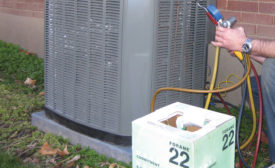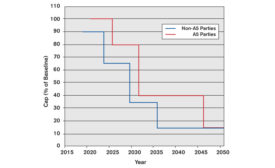Refrigeration
Monitors ac power in addition to temperature parameters
Read More
HotSchedules and Cooper-Atkins to Bring Refrigeration IoT to Restaurants
New integration ensures food safety by transmitting real-time temperature alerts
March 11, 2016
Seafood Companies to Pay Nearly $500,000 in Penalties Due to Refrigerant Releases
Settlement announced by U.S. Environmental Protection Agency and U.S. Department of Justice
March 10, 2016
Ames Laboratory to Research Caloric Materials, Help Advance Refrigeration Technology
It will lead consortium called CaloriCool
March 10, 2016
Hillphoenix AdvansorFlex Brings CO2 Refrigeration to Small, Medium-Sized Retailers
Designed for those who don’t have the square footage for a full-sized system
March 8, 2016
American HFC Coalition Files Antidumping Duty Petition Against R-134a from China
Alleges dumping margins for R-134a refrigerant ranging from 150 percent to over 200 percent
March 7, 2016
The Professor: In Spring, Thoughts Turn to Troubleshooting
Spotting problems now will help you get a/c systems ready for cooling season
Read More
Ice Breaker: When in Doubt, Don’t Just Change It Out
Techs must seek to prove their diagnosis, not randomly swap out parts
Read More
Surviving Refrigerant Transitions, Part 2
The drive to lower-GWP alternatives will define our landscape for years to come
Read More
Ammonia Refrigeration Users Advised to Carefully Study New IIAR 2 Standard
An essential guide for the safe design and operation of ammonia refrigeration systems
March 2, 2016
Copyright ©2025. All Rights Reserved BNP Media.
Design, CMS, Hosting & Web Development :: ePublishing





